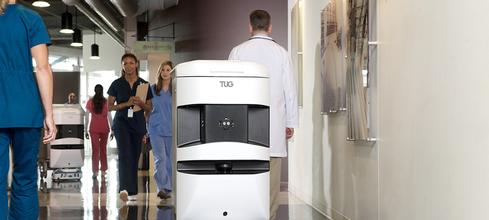It's estimated 100,000 healthcare professionals abuse prescription drugs, endangering patients and hospitals. Video, bar coding, and even robots could bring the number down.

errors dropped 31%after the barcoding implementation, the US National Library of Medicine at the National Institutes of Health reported.
Need an immediate reduction? Add cameras. The National Community Pharmacists Association's Protect Your Pharmacy Now! program was designed to help independent chemists safeguard themselves from internal and external threats. In addition to standard retail anti-theft aids such as height stickers, the solution includes discounts on employee background screening, narcotics safes, surveillance systems, and cameras, the group said.
Video surveillance systems are a growing component of healthcare organizations' anti-theft operations. Skyway Security, for example, created a remote surveillance system specifically designed for pharmacies. Likewise, VideoSurveillance.com targets both drugstores and hospitals with its family of IP-based systems.
Often, hospitals integrate pharmacy surveillance with existing systems already protecting public areas such as parking lots and elevators. However, hospitals must keep privacy, tampering, and over-reliance in mind when installing video surveillance as part of a drug-prevention effort, cautioned VideoSurveillance.com. Cameras alone are seldom the answer to drug diversion.
Security technologies -- video surveillance, inventory management, and IoT -- won't guarantee complete protection, but will safeguard medication against some abuse, be it from an addict or an opportunist. Many states don't force healthcare facilities to alert law enforcement if they find employees using or diverting medication, and disciplinary action by a healthcare organization is rare, reported USA Today.
As a result, patients' lives could be in jeopardy. About 8 million people work in healthcare, therefore drug-abusing medical professionals represent only 1.25% of employees. This small group can, however, wreak a lot of havoc and pain, irreparably damaging patients and, perhaps, reputations.
Investing in technologies that curtail abuse of prescriptions protects patients, employees, and reputations, and improves productivity. It's time for healthcare to write itself a prescription for pharmacy management systems and new drug delivery technologies.
Download Healthcare IT in the Obamacare Era, the InformationWeek Healthcare digital issue on the impact of new laws and regulations. Modern technology created the opportunity to restructure the healthcare industry around accountable care organizations, but IT priorities are also being driven by the shift.
About the Author(s)
You May Also Like







